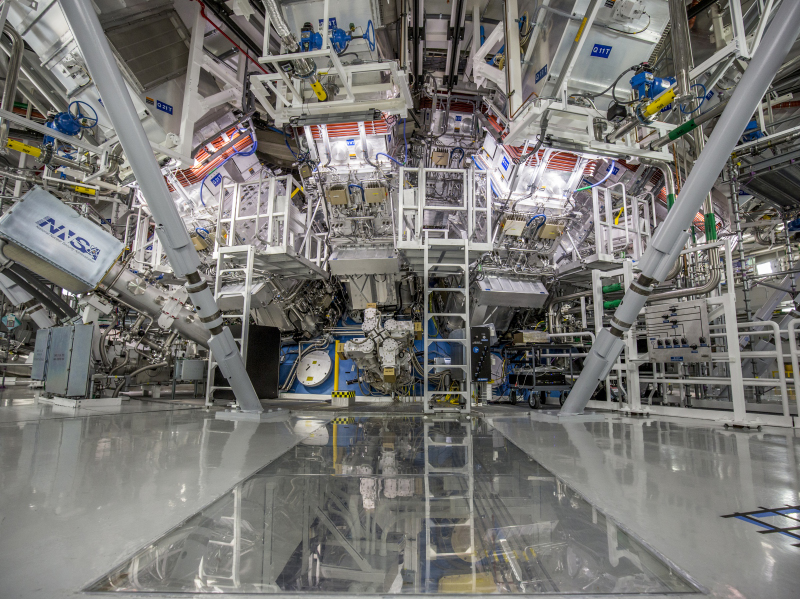 LLNL’s National Ignition Facility target chamber. Image: LLNL
LLNL’s National Ignition Facility target chamber. Image: LLNL
Researchers at the US Lawrence Livermore National Laboratory (LLNL) have reported a fusion first with an energy production greater than the input energy.
The result, after many decades of experimentation, raises hopes for the potential of nuclear fusion as a clean energy source, although its commercialisation, from the LLNL’s inertial confinement fusion technology at least, is still years away.
The LLNL experiment conducted at its National Ignition Facility in Livermore, California delivered a fusion energy output of 3.15MJ from an input energy of 2.05MJ – a more than 50% gain.
The input was provided by 192 laser beams directed at a hydrogen fuel target in a millimetre sized capsule and comes following a focus on the design of the capsule both to eliminate the tiny imperfections and to concentrate the energy at the target hot spot.
“The pursuit of fusion ignition in the laboratory is one of the most significant scientific challenges ever tackled by humanity, and achieving it is a triumph of science, engineering, and most of all, people,” commented LLNL director Dr Kim Budil.
“Crossing this threshold is the vision that has driven 60 years of dedicated pursuit – a continual process of learning, building, expanding knowledge and capability and then finding ways to overcome the new challenges that emerged.”
LLNL’s National Ignition Facility is a sports stadium size facility, with the fusion taking place in a spherical target chamber.
The inertial confinement fusion approach, one of several being pursued in fusion research programmes around the world, was pioneered at the LLNL and subsequently has been taken up primarily in the US.
Researchers from several of the national labs as well as universities and other organisations not only in the US but also the UK and France contributed to the December 5 breakthrough.
Deuterium-tritium fusion
The target is made up of a mixture of the hydrogen isotopes deuterium and tritium within a gold plated cavity known as a hohlraum. The laser beams are amplified before entering the hohlraum at the top and bottom, where they ablate to cause the implosion of the fuel and the fusion into helium that releases the energy.
To achieve the fusion requires a temperature in excess of 82 million oC and pressure exceeding 100 billion Earth atmospheres, similar to those in the cores of stars such as the Sun, which are powered by hydrogen fusion.
As stars age and the hydrogen in the core is depleted, then helium fusion to carbon can occur as hydrogen fusion continues in the outer shell.
The researchers will now continue to refine several facets of the technology, while the US Department of Energy has indicated its current restarting of a broad-based, coordinated inertial confinement fusion programme.
While efforts will continue to be devoted to the target design and the laser drive symmetry, recent work has demonstrated the potential to boost the performance of the implosion by embedding the target capsule in a strong magnetic field.
Experiments also are planned on cryogenic magnetised systems.
